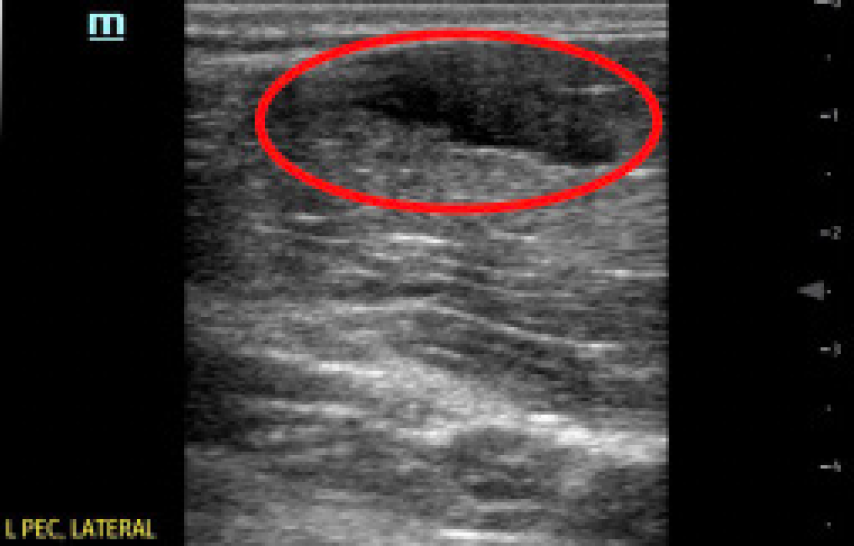A torn pectoral muscle is a painful injury that can significantly impact your ability to perform daily activities or participate in sports and weightlifting. The pectoral muscle is a large muscle located in the front of your chest that is responsible for moving your upper arm and shoulder. In this article, we will discuss the causes, symptoms, and treatment options for a torn pectoral muscle, as well as ways to prevent this injury from occurring.
The pectoralis major muscle is a powerful muscle that is divided into two parts: the clavicular head and the sternal head. It originates from the clavicle, sternum, and ribs and inserts into the humerus bone of the upper arm. The pectoralis major works together with other chest muscles to perform a variety of movements, including pushing, pulling, and lifting such as a bench press exercise.
A torn pectoralis muscle is usually caused by a sudden and severe injury that places stress on the muscle. This can occur during weightlifting exercises such as the bench press or when performing other activities that involve pushing or pulling heavy objects. In some cases, a tear or partial tear may occur due to overuse or repetitive strain on the muscle.
The most common symptom of a torn pectoral muscle is a sudden and sharp tearing sensation in the front of your chest or near the armpit. Other symptoms may include pain, swelling, bruising, weakness, and difficulty moving your arm or shoulder. If you experience any of these symptoms, it is important to seek medical attention as soon as possible.
Your doctor will perform a physical examination to assess the severity of your injury. They will check for swelling, bruising, and pain in the affected area, as well as your range of motion and muscle strength. Your doctor may ask you to perform specific movements to test the function of your pectoral muscle. An example of this is checking the contours of the muscle line and seeing if they are apparent or not.
In some cases, your doctor may order imaging tests such as an X-ray, MRI, or ultrasound to get a better look at the injury and determine the extent of the damage.

Image demonstrates hypoechoic hematoma formation (red circle) in the distal portion of pectoralis major muscle bellies.
(image from: https://westjem.com/cpc-em/point-of-care-ultrasound-for-suspected-pectoralis-major-rupture-a-case-report.html)
Your doctor may also perform other diagnostic tests, such as electromyography (EMG) or nerve conduction studies, to assess nerve damage or muscle function.
If the tear is only partial, your doctor may recommend conservative treatments such as PEACE. Protect, elevate, avoid inflammatories, compression, education as well as physical therapy to help you regain strength and mobility in the affected muscle. Pain medication and anti-inflammatory drugs may also be prescribed to help manage pain and swelling.
If the tear is severe or a complete tear of the pectoralis major tendon has occurred, surgical treatment may be necessary to repair the muscle. Surgery involves reattaching the torn muscle or tendon to the bone using sutures or anchors, and may require a period of immobilization and rehabilitation afterwards.
After surgery, a rehabilitation program is essential to help you regain strength and range of motion in the affected arm. Your surgeon will recommend physical therapy to help stretch and strengthen the pectoral muscles in order to help you regain your full range of motion in the affected arm.
One of the most important ways to prevent a torn pectoral muscle is to properly warm up and stretch before any physical activity. This can help to increase blood flow and prepare your muscles for exercise. Additionally, stretching can help to increase flexibility and reduce the risk of injury.
Side note, it’s MORE important to stretch at the END of your training session than the beginning.
If you are weightlifting, it is important to gradually increase the weight and intensity of your workouts over time. This will help your muscles get stronger and better able to handle the stress of heavier weights.
Another important factor in preventing a torn pectoral muscle is to ensure that you are using proper technique and form during exercise. The pec is torn when stretched to its maximal position like most muscles. In this case, the pec is stretched beyond it’s maximal position when the elbow is behind the trunk AND the wrists are outside of the elbow position. For this reason, following pec repairs, many surgeons recommend only benching with a closer grip and/ or lighter weights. This can help to reduce stress on your muscles and prevent injuries from occurring.
If a torn pectoral muscle is not diagnosed and treated in a timely manner, it can lead to persistent pain and weakness that can impact your ability to perform daily activities.
In some cases, a torn pectoral muscle can lead to persistent pain and weakness that may require ongoing treatment or surgery to alleviate.
Without proper rehabilitation and strength training, there is a risk of re-injury or recurrence of the torn pectoral muscle.
In conclusion, a torn pectoral muscle can be a painful and debilitating injury that can significantly impact your daily life. However, with proper diagnosis and treatment, as well as appropriate preventative measures, you can reduce the risk of this injury occurring and get back to your usual activities as soon as possible.